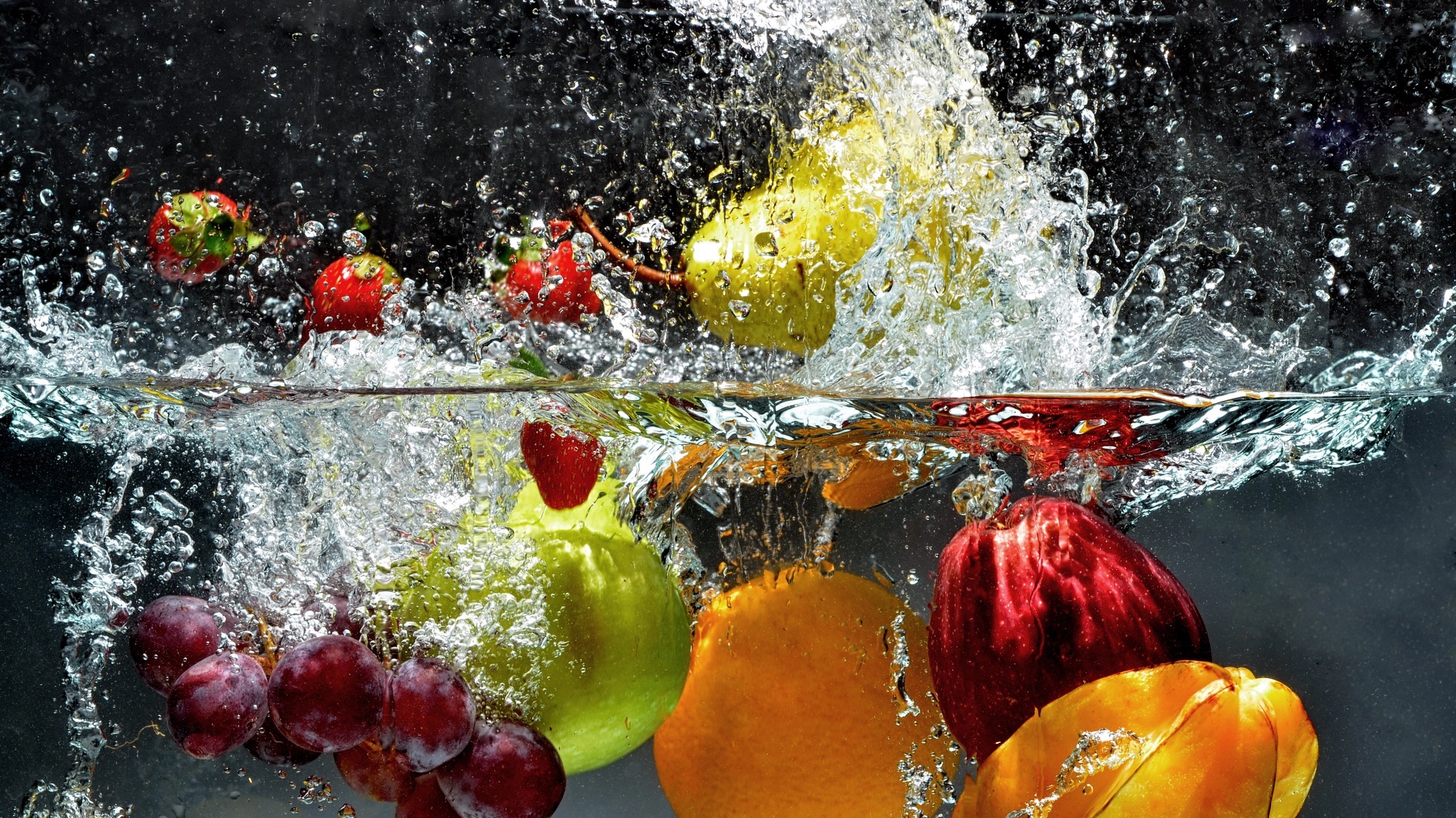
It’s bath time for your fruits and vegetables. Image: DepositPhotos
Whether sourced from a bustling grocery store, a local farmers market, or even your own garden, fruits and vegetables come into contact with numerous surfaces and hands during their journey to your kitchen. This makes them susceptible to various contaminants. Proper cleaning is crucial not only for enhancing food safety but also for preserving the nutritional integrity of fresh produce. The effectiveness of cleaning methods varies based on the type of produce.
Why wash produce?
Fruits and vegetables can contain pesticides, such as fungicides, which have been linked to health issues. But the Environmental Protection Agency (EPA) maintains safety standards to keep exposure levels below an acceptable limit. Additionally, produce can be contaminated by pathogens like E. coli and Salmonella and environmental pollutants like heavy metals and airborne toxins. Washing produce can reduce these contaminants, making the food safer to eat and maintaining its nutritional quality.
The case against using cleaners
When selecting the right cleaning agents for your fresh produce, it’s crucial to be mindful of the potential risks associated with certain products. While common cleaning agents like soap, vinegar, lemon juice, baking soda, and store-bought produce washes may seem effective, they are unnecessary for removing the most common residues on produce. The Food and Drug Administration (FDA) advises against using these agents. Studies have indicated that rinsing and scrubbing fresh produce under cold running water is just as efficient as using a vinegar solution to reduce bacteria on fresh produce.
Start with proper hygiene
Before cleaning your produce, it’s essential to prevent cross-contamination, a common cause of food-borne illnesses. Start by washing your hands thoroughly with soap and hot water for at least 20 seconds, ensuring that all surfaces of the hands are properly cleaned. Then, clean all utensils and food preparation surfaces using hot, soapy water, and consider using a food-safe sanitizing solution to eliminate any lingering bacteria. It’s also crucial to clean and sanitize the produce brush after each use to prevent the transfer of contaminants back onto the produce.
Before washing the produce, carefully inspect and remove any bruised or visibly spoiled parts. Spoiled sections can harbor potentially harmful pathogens and spread to the rest of the produce during handling. After removing these sections, place the produce in a clean, sanitized sink or container, away from raw meats or poultry, to avoid contamination from other food sources.
Firm produce
For firmer produce such as apples, lemons, and root vegetables like potatoes and carrots, thorough cleaning is crucial due to their exposure to soil and various handling processes. Using a clean, soft-bristle brush under cold running water effectively removes residues and surface bacteria. This technique is particularly beneficial as the firm texture of these fruits and vegetables can withstand scrubbing without sustaining damage.
Leafy greens
Leafy greens such as spinach, lettuce, and Swiss chard are delicate and require careful handling to maintain their quality and safety. The initial step in cleaning these greens involves removing the outermost leaves, which are often the most contaminated and damaged. After this, submerge the remaining greens in a bowl of cool water. This will loosen dirt and potential contaminants from the leaves. It’s beneficial to gently swish the greens in the water, which helps remove finer particles and surface bacteria without damaging the leaves.
To ensure thorough cleaning, allow the greens to soak for a few minutes in the water. This soaking helps to dislodge any remaining dirt or microorganisms further. After soaking, lift the greens out of the water rather than pour them out, preventing redepositing any dislodged dirt back onto the leaves. Finally, give them a gentle rinse under fresh, cool running water to wash away any lingering impurities.
Delicate produce
Delicate produce like strawberries and mushrooms should not be cleaned using abrasive methods like brushing, as this can easily damage their surfaces. Instead, these items should be rinsed under a gentle but steady stream of water. When cleaning strawberries, it’s best to hold them by their stems to minimize contact and reduce the risk of bruising. For mushrooms, quickly pass them under water and lightly rub away any visible dirt with your fingers. Their porous nature means they absorb water quickly, which can alter their texture and flavor.
Drying produce
Properly drying produce is essential to prevent spoilage and inhibit the growth of bacteria, which thrive in moist environments. The key is to remove as much moisture as possible without damaging the produce. For items like herbs and leafy greens, using a salad spinner can efficiently expel excess water, followed by patting dry with a clean towel.
For fruits and vegetables that can be sliced, spreading them in a single layer on a clean, dry surface and air drying or using a fan can help speed up the drying process. Ensuring good air circulation is critical, as it dries the produce and prevents the formation of microdroplets that can harbor bacteria. Always store dried produce in airtight containers in a cool, dry place to maximize shelf life and maintain quality.
>>> Read full article>>>
Copyright for syndicated content belongs to the linked Source : Popular Science – https://www.popsci.com/health/how-to-wash-fruits-and-vegetables/































